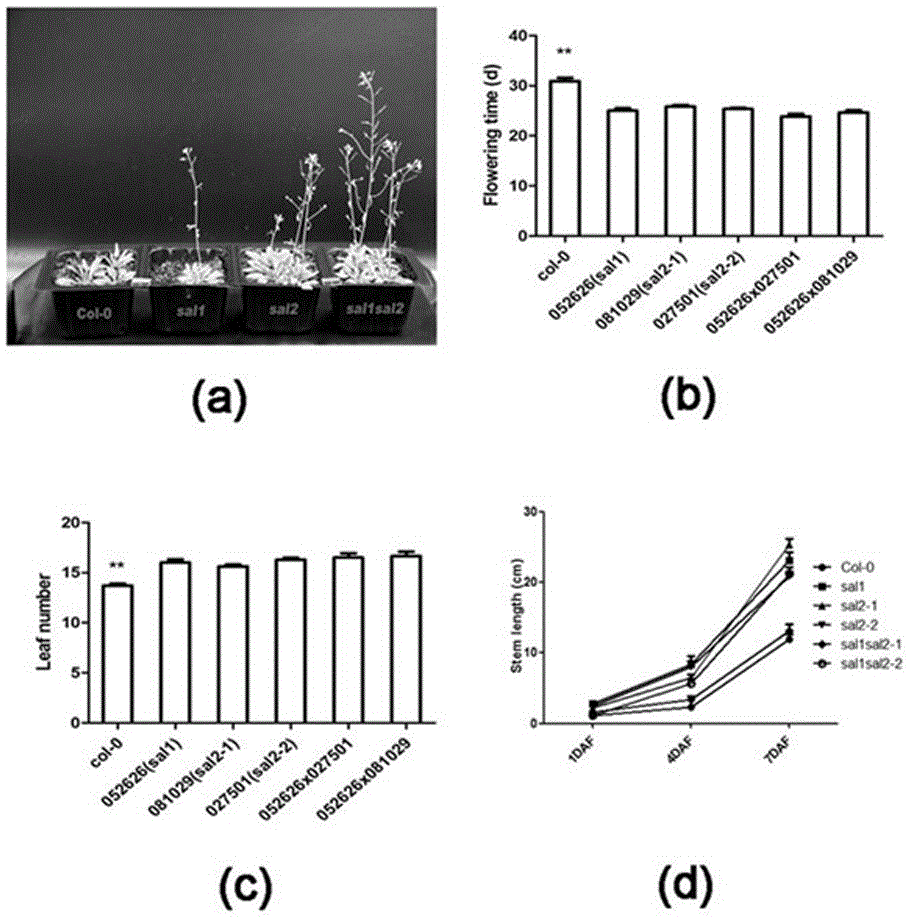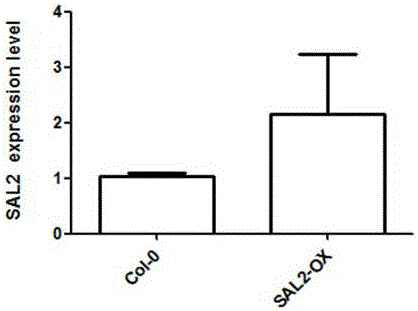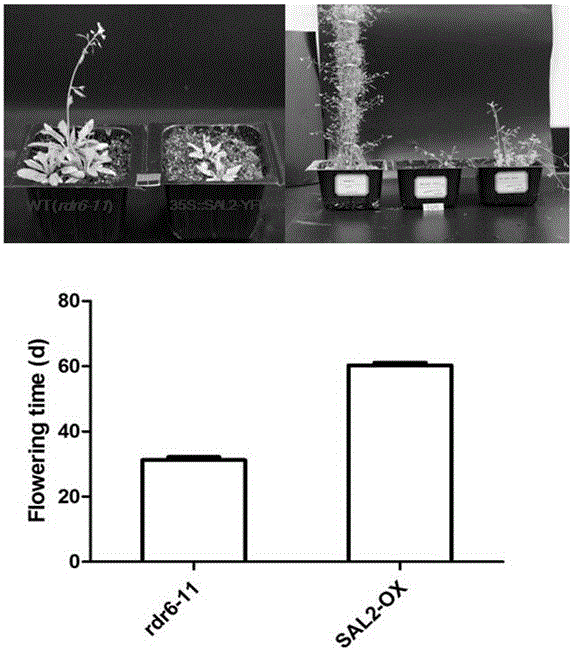Application of Arabidopsis thaliana SAL gene on regulating flowering time and amount of rosette leaves
A technology of flowering time and Arabidopsis thaliana, applied in application, genetic engineering, plant genetic improvement, etc., can solve problems such as lack of vegetative growth, low photosynthetic products, and small number of leaves
- Summary
- Abstract
- Description
- Claims
- Application Information
AI Technical Summary
Problems solved by technology
Method used
Image
Examples
Embodiment 1
[0014] 1. Obtaining Mutants
[0015] All SAL1 / 2 mutants used were ordered from the Arabidopsis Resource Center (ABRC, The Ohio State University Rightmire Hall 1060 Carmack Road Columbus, OH 43210 USA). in sal1 The number is SALK_052626, sal2-1 The serial number is SALK_018029c, sal2-2 The number is SALK_027501, and all mutants are constructed by T-DNA insertion.
[0016] double mutant sal1sal2-1 and sal1sal2-2 The construction is obtained by crossing single mutants with each other, and the specific operation method is: look for flower buds that are still tightly closed, but the stigma starts to protrude from the top of the flower. Using sterilized tweezers, remove any flower buds from a plant that are not emasculated. Remove all parts of the flower except the pistil with sterilized forceps, and pollinate immediately. Select the flower that has bloomed and remove the pistil with sterilized forceps. Gently touch the emasculated stigma with pollen. If the stigma elo...
PUM
 Login to View More
Login to View More Abstract
Description
Claims
Application Information
 Login to View More
Login to View More - R&D
- Intellectual Property
- Life Sciences
- Materials
- Tech Scout
- Unparalleled Data Quality
- Higher Quality Content
- 60% Fewer Hallucinations
Browse by: Latest US Patents, China's latest patents, Technical Efficacy Thesaurus, Application Domain, Technology Topic, Popular Technical Reports.
© 2025 PatSnap. All rights reserved.Legal|Privacy policy|Modern Slavery Act Transparency Statement|Sitemap|About US| Contact US: help@patsnap.com



